Industry and government, working hand-in-hand, have accelerated the destruction of our environment.
Wherever there are big dirty secrets that mankind has buried under water and underground, dumped in radioactive tailing ponds and swept under the metaphorical rug— environmentalist, filmmaker and speaker Lawrence Gunther is ready to bring the issue into focus.
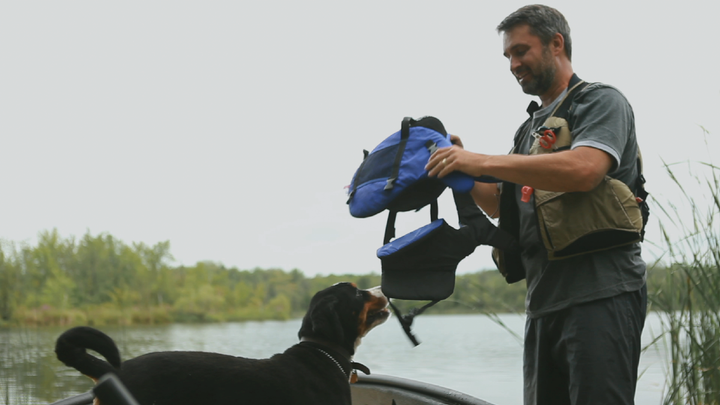
“At the other end of Lake Athabasca, Canada’s 9th largest freshwater lake, are Alberta’s oil sands and the massive tailings ponds that we know are leaking into the Athabasca River,” explains filmmaker Lawrence Gunther.
As a person who was registered blind as a child, Gunther has made it his life’s mission to consider what’s taking place in our planet’s natural yet under-surface environments and draws on his unique perspective to explore and share what others aren’t able to see that takes place just below the surface.
“People need to suspend their need to see things before they can believe. Even though I personally no longer have any sight, I still believe that the world exists. The next time you’re in nature, touch it, really smell it, put it in your mouth and taste it—experience nature like a baby. I’ll guarantee you, that if you re-establish a connection with nature as intended, you’ll be a lot less willing to see it degraded in exchange for the promise of a few jobs.” — Lawrence Gunther
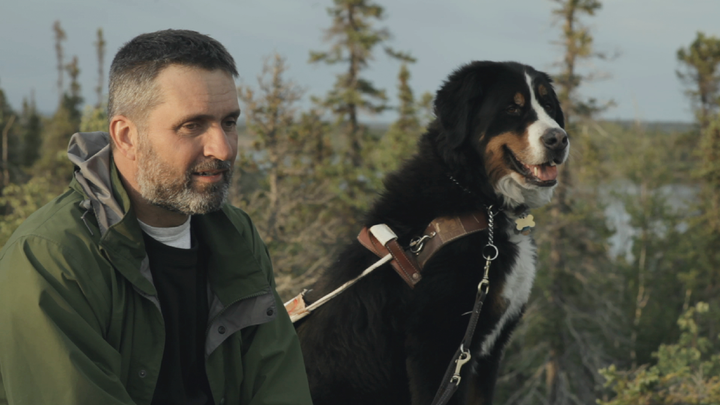
“I started Blue Fish Canada to encourage people to find themselves a pond, river, lake or bay where they can catch a fish for dinner once in a while, and to then take responsibility for ensuring nothing bad happens to their fishing hole that could stop their great grandchildren from doing the same. It’s what all of us have done since the beginning of time, until lately.”
WHAT LIES BELOW
Gunther’s latest project is the feature-length documentary film, “What Lies Below” (IMDb), directed by Canadian director and screenwriter Emanuel Hoss-Desmarais (Winner, Best New Narrative Director, 2013 Tribeca Film Festival) and produced by Alex Sliman. “What Lies Below” is playing in festivals around the world and will soon begin airing on CBC Documentary Channel and AMI TV.
To uncover what really does lie below, the film looks at 11 water quality, climate change, corporate greed issues and (quite literally) the lies that we the people have been told. It addresses the fact that industry and government, working hand-in-hand, have accelerated the destruction of both the aquatic environments and fish populations by dumping industrial and human waste into the water that people and wildlife drink, live in and near and depend on.
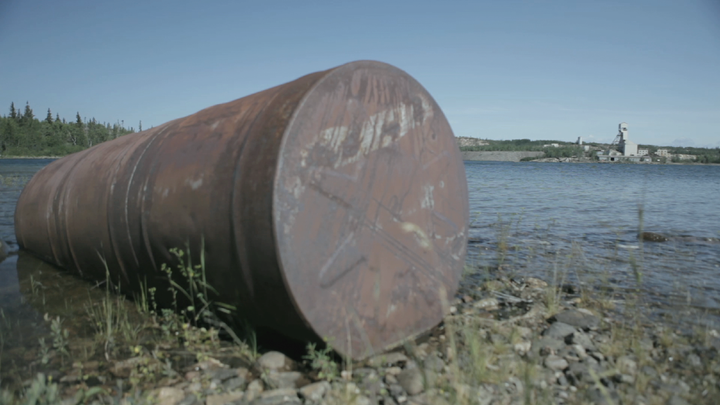
Lawrence Gunther’s work has been well recognized including his receipt of the Governor General’s Meritorious Service Medal.
In the documentary, Gunther interviews more than 80 people, including those from three indigenous communities. He says, “These are the folks you don't find on the web.”
Yet, his journalistic journey didn’t reach completion with this eye-opening film; he continues to conduct interviews and talk with those who have been affected by these issues and have stories that need to be told—and perhaps more so—stories that need to be heard.
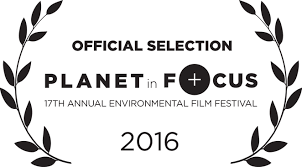
A STORY THAT NEEDS TO BE HEARD
One interview that captures the message, in the raw and honest way that only first-hand experience can, is with Canadian outdoorsman, Terry Bachmeier. From 1953 to 1965, Bachmeier lived with his family in the ‘Wild North’ of Saskatchewan, near the border of the Northwest Territories, in the town of Uranium City on Lake Athabasca. The town existed solely to provide a workforce for the uranium mine.
For the townspeople, their bold pioneering dream came at a deadly price. And nobody talked about it.
“A lot of men got sick and babies died,” Terry Bachmeier recalls.
Bachmeier’s father, George, who died at just 48 years old, left behind his wife, Hilda, and 11 children.
His story begs us to ask the question, “Who’s looking after our environment and wellbeing when our government sells us out?” And here’s one more question to bring it even closer to home, “What would you sacrifice to put food on the family table?”
MEN JUST DISAPPEARED
“What do you mean a lot of men got sick and babies died?” Gunther asked.
“Well, they were working in the uranium mine, underground in the cold and damp and breathing rock dust and dynamite fumes and exposed to radiation. A lot of them got sick, respiratory problems. My father contracted leukemia.”
“Didn’t people complain? Didn’t the miners complain?”
“Some people complained, they wondered. Most people believed what the mining authorities told them. The doctors were sponsored by the mine. Every year the miners had to get chest x-rays and physicals. And it seemed, as we remembered it, everybody got approved. “You’re in A-1 health. You can go continue working in the mine,” they would say. So, some of them got sick and just disappeared. You didn’t hear from them anymore.”
“It’s like they didn’t want to say that the Emperor had no clothes.”
“They didn’t want to bite the hand that feeds them.”
TINY GRAVES
“You lost a little brother there too.”
“Yes, he was only a day and a half old.”
“And how did he die?”
“Malformed, malfunctioning heart. We were 12 children. So just 11 were left after Anthony died.”
“And was there a lot of infant mortality in the area?”
“Oh yeah. My gosh, you would not believe it. When I went back nine years ago to take a walk down memory lane and take pictures, I went to the graveyard to find my brother’s grave. It was very sad to see how many tiny, tiny fences there were around these little tiny grave plots.”
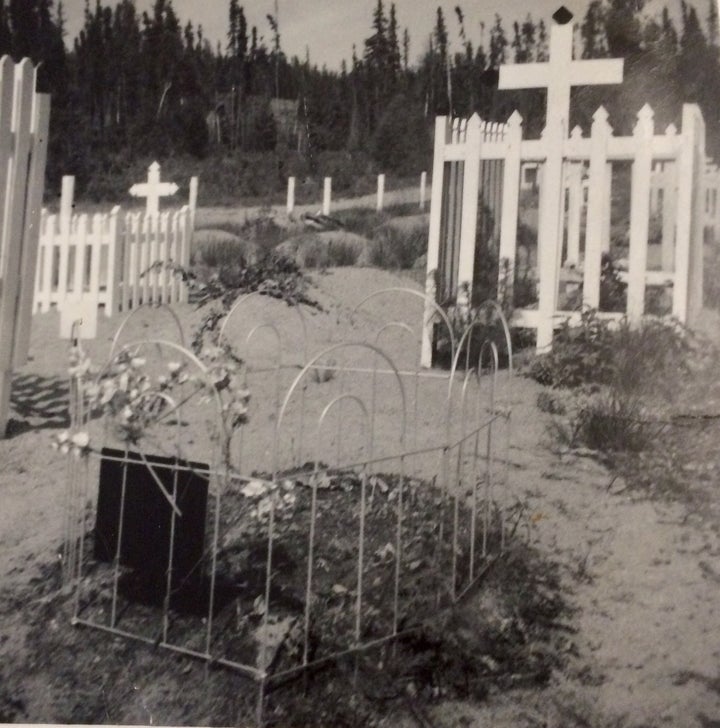
Terry Bachmeier who has resided in Ontario for the last 50 years, returned in 2008 to the abandoned northern Canadian town of Uranium City, Saskatchewan, to recover his baby brother Anthony’s headstone.
“ I remember Anthony’s funeral. I was 15. The coffin was nothing more than a tiny pine box. It was lowered into a form in the ground made of rough-cut spruce. At the service it was just the family and a priest. We were all just standing there: staring at our feet, praying, and trying not to look at the gaping mouth in the earth.
Then my dad broke the silence by handing me a hammer and some nails and instructed, “Get in the hole.” I looked at him, confused. “Nail the lid on the box, Son,” he said. I suppose this was just something that needed to be done. I did as I was told: holding the hammer under my arm and nail heads between my lips, I lowered myself in the grave. The box containing my baby brother’s body creaked and arced under my weight and I wondered if it was sacrilege that I stood on my brother’s resting place. It left a memory like ink on my soul.” — Terry Bachmeier (further to the original interview)
MAKING A WAY, WHERE THERE IS NO WAY
When the Cold War with Russia dried up, so did the usefulness of the uranium mine in Uranium City, and all of its workers.
Bachmeier described the epic exodus from town, “Eldorado (Eldorado Mining and Refining) decided to close—it was owned by a company from England—but they didn’t tell anybody. How the town found out was the next day when they got the newspaper, which was the Edmonton Journal. Of course panic set in, nobody could sell a house. Who’s going to buy a house there?”
“You could only get out by airplane, there was no other way. So when Lake Athabasca froze over, caravan after caravan would leave that town in trucks and cars just totally loaded down with whatever they could of their possessions. And everything else they had to leave. They just walked away from it, across the frozen lake.”
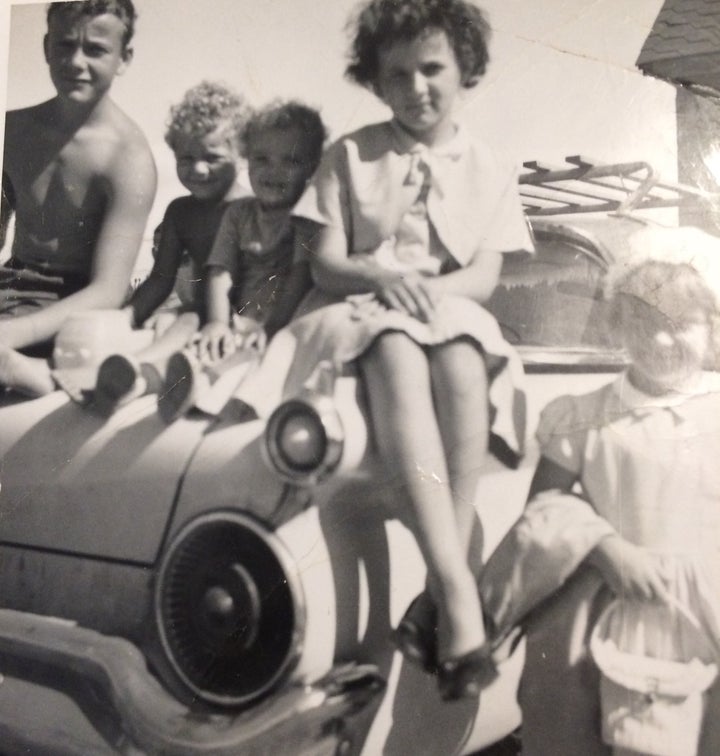
Five of the 12 Bachmeier children. From left to right: Terry, Gary, Joe, Linda and Audrey.

Returning to walk in the memory of his childhood, Terry Bachmeier sits atop the rusted out shell of his father’s old 1959 Ford Galaxy, left behind like the many ruins of this now ghost town. “Nature has reclaimed the town,” Bachmeier observed on his return trip.
NOT JUST STORIES FROM THE PAST; WARNINGS FOR TODAY
Like Terry Bachmeier, Lawrence Gunther also grew up in a small town, and even though he was registered blind at age eight, he spent his childhood wading rivers and hiking forest trails, camping and canoeing, fishing, and even chasing rabbits with his beagle, Sam. Still today, his passion for nature is always with him. Gunther adds this, “When I took my film crew to Uranium City and we walked its deserted streets it left me shaken. It was like a bad dream, you know, the one where you go back home and everyone you know is gone.”

The abandoned town of Uranium City, Saskatchewan.
“Even though the over 80 former uranium mine sites in northern Saskatchewan are now being decommissioned by the Canadian government, only the visual evidence is being removed in the form of building demolition; none of the actual radioactive tailing ponds or slag heaps have yet to be properly contained. They continue to leach radiation into the surrounding environment, and will for thousands of years if not addressed.”
“At the other end of Lake Athabasca, Canada’s 9th largest freshwater lake, are Alberta’s oil sands and the massive tailings ponds that we know are leaking into the Athabasca River. The river flows north into Lake Athabasca and then out again up the McKenzie River where it drains into the Arctic Ocean.”
“If this river were to flow south toward urban communities, I don’t think people would be quite so eager to see oil extraction there expand to meet growing demand for bitumen due to the new approved pipelines.”
...And so, we must ask these questions once more: “Who’s looking after our environment and wellbeing when our government sells us out?” And, “What would you sacrifice to put food on the family table?”
For more information about these issues and the film “What Lies Below”, visit www.WhatLiesBelow.ca.
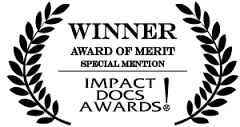
Our continued and unrestrained ill-use of these aquatic environments and their dependent life forms is not only resulting in the virtual destruction of these eco-systems and the near extinction of numerous wild fish stocks and other wildlife, but has now placed at risk our future existence — “What Lies Below” (Official Selection, Planet In Focus, 17th Annual Environmental Film Festival)
To learn more about issues affecting our ecosystems, visit www.BlueFishCanada.ca.
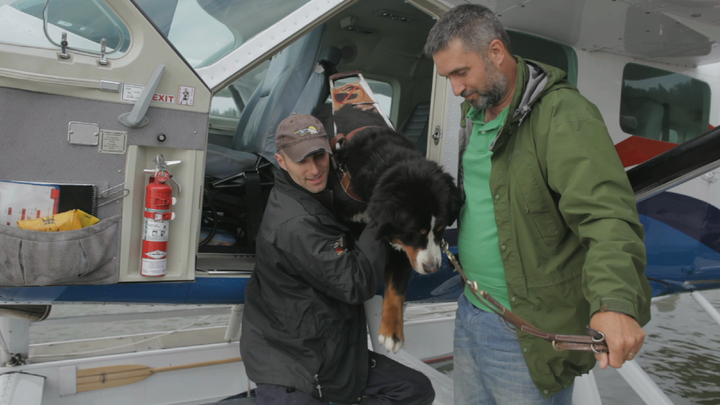
Lawrence Gunther and Maestro continue their work to expose what lies below the surface, and to open eyes, minds and hearts to our precious natural world.
